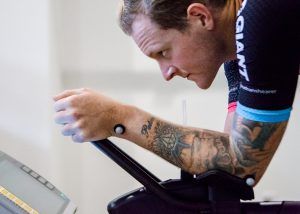In refining time trial performance, we often obsess over position consistency and the effect that it has on aerodynamic efficiency. Equipment choice and setup options are vital considerations in achieving desirable outcomes, but success all comes back to the hand hold of the athlete.

Published by Adaptive Human Performance
Holding Hands
Collectively, our wedge solution and the use of a supportive arm cup facilitate a high-hands time trial position, through matching the angle of the arm cup with the angle of the forearm. Angulation in this manner helps to prevent forward slipping of the elbow, associated with aggressive positioning and high-hand placement.
“Aero techniques and equipment choice are vital in taking your position from a pseudo high-hands position to achieving a true high-hands position.
Achieving the forearm angle comes down to the hand hold. A double-clasp is recommended, allowing for symmetrical forearm contact and greater security than a bridged single-clasp. This double-clasp grip is important when we consider the aero techniques that need to be executed.
When we talk aero techniques, we refer to the actions deployed by an athlete to enhance their position on the bike, for performance gain. In this case we refer specifically to the athlete elevating the wrists (ulnar deviation), flattening the hands, drawing them close to the head and locking the forearms into the arm cups. It is this action that is vital for achieving a true high-hands position and the gains in aerodynamic efficiency that come with it.
Nathan Shearer using the Adaptive HP 15-degree wedge solution.


